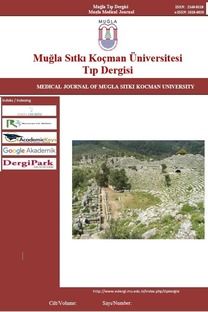ACİL SERVİS HASTA ŞİKÂYETLERİNİN DEĞERLENDİRİLMESİ
Hasta şikâyet yönetim sistemi, hasta deneyimlerini, beklentilerini ve ihtiyaçlarınısağlık kurumuna aktaran stratejik bir yönetim aracıdır. Şikâyet yönetim sisteminin etkili olarak kullanılması kuruma hastalarının beklentilerini ve hastasını tanıma fırsatı sağlarken ayrıca kurumun eksikliklerini görmesini de sağlar. Bu sayededaha gerçekçi ve amaca uygun kalite iyileştirme programları belirlenebilir. 1 Ocak 2010-31 Mart 2012 tarihleri arasında Sağlık Bakanlığı iletişim merkezine (SABİM) ve hastanemiz hasta hakları birimine başvurarak hastanemiz erişkin acil servisiyle ilgili şikâyet, eleştiri ve teşekkürlerini bildiren başvurular dikkate alınmış ve bu başvurularda şikâyet/eleştiri/teşekkür edilen kişi, şikâyet nedeni, şikâyete sebep olan olayın saat dilimi, günü, hastanın acil servis triaj durumu ve şikâyetin son durumu incelenmiştir. Elde edilen veriler SPSS 17 bilgisayar programına kaydedilip, İstatistik analizlerde; ki-kare testi ve Mann Whitney U testleri kullanılmış ve p<0.05 anlamlı fark olarak kabul edilmiştir. Başvuruların sadece bir tanesi teşekkür başvurusu olduğu diğerlerinin eleştiri ve şikâyet başvuruları olduğu görüldü. En sık şikayet gününün Cuma (%18.2), en sık şikâyet saatinin de acil servisin yoğun olduğu saat dilimi olan 14-24 arası saat dilimin (%87.9) olduğu tespit edildi. Başvuru yapanların %53’ünün sarı triaj kodlu hastalar için başvurmuş olduğu bunu %43.9 ile yeşil triaj kodlu hastalarla ilgili başvuruların taki p ettiği görüldü. En sık şikâyet edilen kişinin de Acil serviste nöbetçi hekimlerin (%44), en sık şikâyet nedenin hekimin ilgisizliği (%24.2), azarlanma (%19.7) ve tetkik ve laboratuarla ilgili eksiklikler (%16.7) olduğu görüldü. Şikâyetlerin çoğunlukla acil servisin yoğun olduğu saatlerde, hekim-hasta iletişimsizliğiyle alakalı olduğu görüldü. Sağlık çalışanlarının çalışma ortamlarının düzenlenmesi ve karşılıklı saygı ile sorunların aşılmasının daha kolay olabileceğini düşünmekteyiz
ASSESSMENT OF PATIENT COMPLAINTS REGARDING EMERGENCY DEPARTMENT
The Complaints Management System is a tool that communicates experiences, expectations, and needs of patients to healthcare facility. Effective use of the this system provides healthcare facility an opportunity to recognize patients and their expectations and to identify their shortfalls. Thus, more realistic and goal-directed quality development plans can be established. In this study, complaints, criticism and acknowledgements about adult emergency department which were reported to SABIM (Communication Center of Health Ministry) and Patients' Rights Department of our hospital were considered and the person subjected to complaint/criticism/acknowledgement, reason for application, date and time of the event, triage status of the patient and final status of application were reviewed. Data obtained were recorded to SSPS version 17 software. Chi-square and Mann Whitney U tests were used for statistical analyses. p<0.05 was considered to statistically significant. It was seen that all applications other than one acknowledgement were complaints or criticisms. It was found that the complaints were most frequent on Friday (18.2%) and at time period of 14:00-24:00 (87.9%). It was seen that applicants were most commonly reported complaints about patients with yellow triage code (53.0%); followed by patients with green triage code (43.9%). It was seen that the complaints were most commonly about emergency clinicians (44.0%) and the most common reasons for complaint were lack of interest (24.2%), telling off (19.7%) and problems about tests and laboratory evaluations (16.7%). It was seen that complaints were mainly associated with time periods of intensive workload in ED and lack of communication between clinicians and patients. We think that it will easier to address problems by structuring work environment of healthcare professionals and comity
